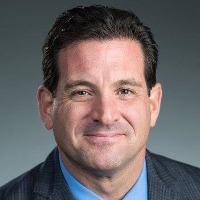On December 29, 2022, President Biden signed the Securing a Strong Retirement Act, also known as SECURE 2.0, into law. This legislation brings about various changes to the retirement landscape. This article focuses on the tax implications for both individuals and employers, many of which significantly affect Certified Public Accountants professionally and personally.
New RMD Age
One of the most significant changes of interest to Certified Public Accountants is the age increase for required minimum distributions (RMDs). Effective December 31, 2022, the age for RMDs goes up from 72 to 73. Eventually, in 2033, the age for RMDs will be further increased to 75.
However, this change may be a sheep in wolf’s clothing. The change allows for another year of tax-deferred growth, which can keep you in a lower tax bracket – what every CPA strives to do for their clients. But, by allowing your portfolio to grow, your RMD will accordingly increase the following year due to a decreased lifespan. This, in turn, will mean a higher income and, consequently, a potential tax bracket bump.
Besides the higher tax bracket you may find yourself in, the larger RMD might also edge up your Medicare premium. Careful attention must be paid to these facts when deciding whether or not to delay taking your RMD.
RMD Penalty Relief
The tax penalty for taking your RMD late has been reduced from 50% to 25% on any untaken portion of the RMD. However, it’s worth noting that this penalty can be further reduced to 10% if the individual corrects their mistake within two years after the end of the same taxable year that they missed the RMD. This means that if an individual did not take their RMD on time but they correct the error within two years, they will be subject to a lower penalty of 10% instead of 25%.
Convert College Savings to Roth IRA
In case you are unaware, a 529 plan is an investment account with the sole purpose of funding university education.
The IRS counts contributions to the 529 plan as taxable gifts. Fortunately, you can exclude up to $17,000 of your contributions from the gift tax in 2023 (up from $16,000 in 2022).
But that’s not the only tax implication of the 529 plan. Any leftovers that you withdraw are hit with a 10% federal penalty. But with SECURE 2.0, 529 leftovers can be rolled into a Roth account.
There are some stipulations, however:
- Rollovers only to beneficiary’s Roth IRA – not account holders.
- The 529 plan must have been opened at least 15 years ago.
- You cannot roll over any contributions or earnings on those contributions made within the last five years.
- Annual Roth contribution limits apply.
- You can roll over a max of $35,000 over your lifetime
Tax Credits
Many CPAs operate their own practice and hire their own employees. SECURE 2.0 incentivizes small businesses with 50 or fewer employees to start a retirement plan by increasing the tax credit. As of 2023, this improved tax credit covers 100% of administrative costs associated with offering a retirement plan, capped at $5,000 per year for a total of three years. Before SECURE 2.0, the tax credit covered only 50% of administrative costs.
Employer’s matching employee contributions also receive a 100% tax credit per employee earning less than $100,000 the first year of the plan (up to $1,000 for the year). Subsequent tax credits go down 25% yearly for the next three years.
Boosted Roth Savings
Newly allowed Roth rules allow employers to make a matching Roth contribution. This may prove a boon if you work for a CPA practice with a 401(K) and have implications for your or your clients’ taxes. Hopping aboard the Roth train are the SIMPLE and SEP retirement plans as well, so you may want to consider Roth contributions if you have one of these plans.
Emergency Withdrawals from Retirement Plans
Tragedy can strike at any time! Unfortunately, these events typically occur when money is most needed. To make ends meet, many victims of emergencies turn to pulling from their retirement accounts early, paying a hefty penalty in the process.
Beginning in 2024, SECURE 2.0 eases the financial burden on sufferers of emergencies by allowing them to withdraw $1,000 a year from a tax-advantaged retirement account penalty-free – again, with some caveats.
- You must pay it back within three years.
- You cannot take out another emergency distribution until you’ve paid the previous one back.
Sufferers of domestic violence have even more leeway regarding penalty-free retirement account withdrawals. If an individual has experienced domestic abuse, they can withdraw up to $10,000 or 50% of their account balance (whichever is lesser) without facing a 10% penalty. However, they will still have to pay taxes on those funds like a regular withdrawal. Sufferers don’t have to repay the withdrawals, but if they do, they can receive a refund on the taxes paid.
In Conclusion
The SECURE 2.0 act has brought about several changes to retirement provisions, and as a CPA, it’s essential to stay informed on how these changes may impact you and your clients.
We recommend that you take a proactive approach to your tax and retirement planning and consider how these new provisions may affect you in the short and long term. For example, with the continuing deferral of RMDs and the potential for higher taxes, now may be an excellent time to consider converting some tax-deferred accounts to Roth accounts. Additionally, if your traditional accounts are currently suffering due to low markets, now may be an opportune time to convert or purchase guaranteed fixed-income products such as annuities or IULs.











